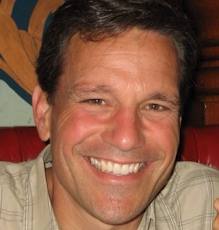An Interview with John Calandro, a Principal in Coast Unified School District.

John Calandro, Principal
Santa Lucia Middle School
Coast Unified School District
Cambria, CA
jcalandro@coastusd.org
Twitter: @mrcalandro
We spoke with John Callandro, principal of Santa Lucia Middle School to ask him how his school is doing summer differently.
1) What does your summer program look like?
Our summer program is the Cambria YMCA Youth Institute. This six-week intensive program is a replication program of the YMCA of the Greater Long Beach Area. The first week is spent camping and team building, and the next 5 weeks are spent learning technology skills- notably Adobe Illustrator, Photoshop, and Final Cut Pro. At the end of the six week institute, every student has written, designed, and published a magazine article in our Youth Institute magazine, and every production group has created their own short film.
2) How is this different than traditional summer school?
The focus of the Youth Institute is asset development instead of remediation. However, many of the students who participate in the Youth Institute are students who struggled with grades during the school year.
Overall, we have found students in our summer program work harder than in traditional summer school, the learning they do in the summer program sticks with them, and they are much more invested in their own learning.
Though our institute runs from 9am-3pm daily, every student showed up early and left late on a daily basis. They came in on weekends to edit and shoot extra footage for their film, and worked closely with community members to produce quality content. They wrote, planned, learned, and practiced clear communication solving real-world problems while developing practical work and life skills.
3) Why did you choose this approach?
We chose this approach because it works! We assessed the needs of our students and community to design a program that would give students opportunities that were unavailable to them in their community. Improvement in school was NOT our primary goal. We wanted students to develop skills they would be able to use in the working world and would broaden their horizons.
Last year we were more successful than we ever could have hoped. Our Youth Institute students brought their learning back to the rest of the school. Our after school program attendance more than doubled. Students who hadn’t gone to the Youth Institute began learning from the ones who had. They created their own films, began filming events in the community, created commercials for our YMCA, and taught technology skills to over 500 community members.
4) What are the benefits for students and staff?
The Youth Institute has dramatically changed our school in one short year. We have fully integrated technology into every aspect of our school day. Teachers are more willing to use technology for student learning because they know students are proficient in various programs. There has been a significant increase in student choice in their learning (differentiation) and in the number of projects students have been able to do in and out of school.
Our students have entered films in and won at film festivals, have created logos for local events and businesses, have created videos for organizations, and have even taught lessons at a local college- all before any of them had turned 15.
Since so much of our afterschool and summer learning program involves students working cooperatively and working in the community, student investment in school has increased. Students have taken a much more active role in in their learning. They present more, do more peer-to-peer teaching and learning, and are constantly focusing on how their in school learning relates to their out of school life and experiences.
Teaching has become easier, and grades have improved because school has become more meaningful.
5) What advice do you have for other principals around summer learning?
Share your resources! Our after school program and summer learning institute have access to all of the school’s resources without restriction. The minimal amount of custodial time and resources (electricity, water, etc), are a small price to pay for the dramatic increase in student investment and learning during the school year.
We have created a true partnership with our afterschool and summer learning program, so it is often difficult to see where the school ends and the after school and summer learning programs begin. Our teachers are able to utilize the resources of the extra time students spend at school. Because they are experiencing things beyond the classroom, our students are connected and involved and want to be at school and the classroom experience is enriched
By partnering with our summer learning and after-school program, we created an atmosphere where the SCHOOL is important and the focus of learning- not the time of day or year.
More about us: Santa Lucia Middle School is in a rural area of the Central Coast of California. The school serves grades 6,7,8 and has approximately 170 students. The school is made up of approximately 63% Hispanic, 35% Caucasian and 2% other. Approximately 60% of the school qualifies for free or reduced lunch. Our API score last year was 859, an increase of over 70 points in the last five years. Our English learner subgroup, Hispanic students subgroup, and Socioeconomically Disadvantaged subgroup are all over 800 points.
Our after school program is an ASES grant funded program run through the YMCA of San Luis Obispo County. Dan Hartzell (dhartzell@sloymca.org) is arguably the best program director in the state, if not the country (ok, so maybe I’m a little biased!). 130 of our 170 students are enrolled in our after school program and our daily attendance is approximately 60 students a day.


